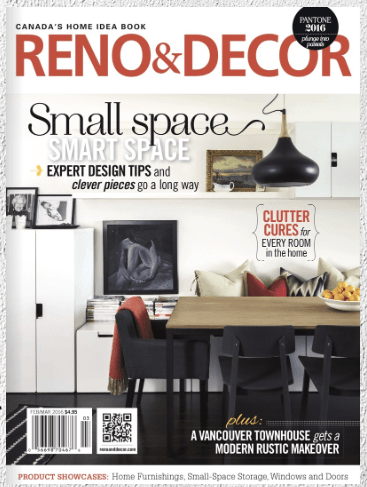-
Bungalow vs Two-Story House: Which One is Better for You?
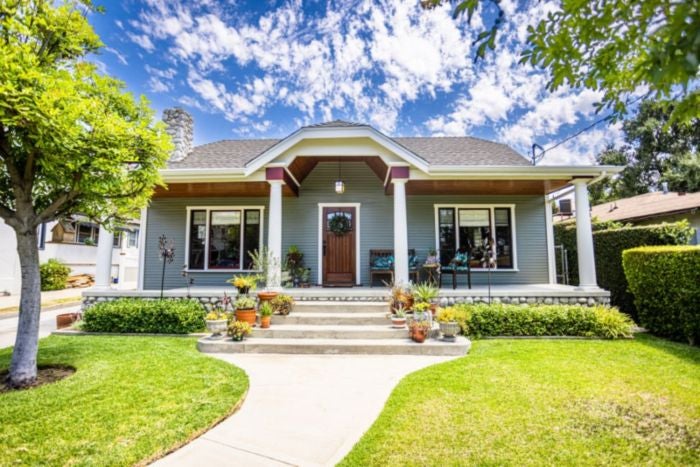
Bungalow vs Two-Story House: Which One is Better for You?
When it comes to choosing the perfect home, the decision often boils down to selecting between a bungalow and a two-story house. Both have unique characteristics, and the right choice depends on your lifestyle, needs, and preferences. In this article, we’ll explore the key aspects of both housing types to help you make an informed decision.
What is a Bungalow?
A bungalow is a single-story house that typically features a low-pitched roof and wide eaves. Originating from British colonial India, this style of home became popular in the United States in the early 20th century. Bungalows are often associated with cozy, compact living spaces and are characterized by their simplicity and efficiency. These homes are generally smaller, making them ideal for small families, retirees, or anyone looking for a more manageable living space.
What is a Two-Story House?
A two-story house, as the name suggests, is a home with two levels of living space. The design can vary greatly, ranging from traditional colonial-style homes to modern architectural marvels. Two-story houses offer more living space and can accommodate larger families or individuals who desire extra space for various activities. This type of home often includes separate areas for different functions, such as a distinct separation between living and sleeping areas.
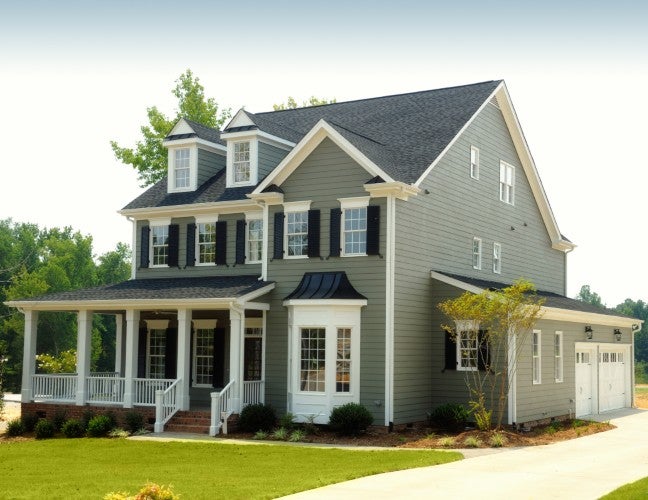
Comparison Between Bungalow and Two-Story House
-
Lot Size
- Bungalow: Bungalows generally require a larger lot size than two-story houses because all the living space is spread out on a single floor. This can limit your outdoor space, particularly in urban areas where land is at a premium. However, the single-level layout can create a more expansive feel to the property, blending indoor and outdoor living spaces seamlessly.
- Two-Story House: Two-story houses are more efficient in terms of land usage. By building upwards, you can have more square footage of living space on a smaller lot. This allows for larger yards, gardens, or additional outdoor amenities, making two-story homes particularly appealing in densely populated areas where land is expensive.
-
Privacy
- Bungalow: Privacy can be a concern in bungalows, as all rooms are on the same level. This layout can make it difficult to create distinct private areas, especially if the home is smaller. However, careful design and strategic placement of rooms can mitigate some of these concerns, and the ease of access to all parts of the home may outweigh privacy issues for some people.
- Two-Story House: Two-story homes naturally offer more privacy, as the separation of floors allows for distinct living and sleeping areas. This can be great for families with children, where parents may want their own retreat away from the noise and activity of the main living areas. Additionally, two-story homes often provide better views from the upper floors, enhancing the feeling of seclusion.
-
Home Additions
- Bungalow: Bungalow addition can be challenging due to the single-story design. Expanding horizontally requires more land, which might not be available. Vertical additions, such as adding a second floor, can be costly and complex, potentially disrupting the home’s aesthetic and structural integrity.
- Two-Story House: Two-story homes offer more flexibility when it comes to home additions. Expanding horizontally is still an option, but vertical additions are often more straightforward and less intrusive than in a bungalow. This makes it easier to add extra rooms, a loft, or even a new floor, depending on the structure’s design and local building codes.
-
Repairs and Remodels
- Bungalow: Bungalows are generally easier and less expensive to repair and remodel due to their simpler structure. With everything on one level, issues related to roofing, electrical, and plumbing are more accessible. This can reduce labour costs and make DIY projects more feasible for homeowners.
- Two-Story House: Repairs and remodels in a two-story house can be more complex and costly. Accessing plumbing, electrical systems, or roofing may require additional labour, especially if it involves working between floors. However, the extra space allows for more extensive remodelling possibilities, such as converting an attic into a liveable area or redesigning multiple rooms without affecting the entire home.
-
Accessibility
- Bungalow: Bungalows are highly accessible, making them ideal for seniors, families with young children, or individuals with mobility issues. With no stairs to navigate, moving from room to room is effortless. This single-level living also reduces the risk of falls and makes future-proofing the home easier as occupants age.
- Two-Story House: Accessibility is a significant consideration in two-story houses. Stairs can be a barrier for some people, and installing alternatives like elevators or stairlifts can be expensive. For younger families or those without mobility concerns, this may not be an issue, but it’s something to consider for long-term living or resale value.
-
Affordability
- Bungalow: Bungalows can be more affordable upfront, particularly in areas where land is less expensive. Their smaller size and simpler construction often result in lower utility bills and maintenance costs. However, in urban areas where land is scarce, the larger lot size required for a bungalow can drive up the overall cost.
- Two-Story House: Two-story houses may have higher initial costs due to their larger size, but they can be more cost-effective in the long run. The efficient use of land can make them a better investment in areas with high land prices. Additionally, spreading the living space across two floors can reduce heating and cooling costs, as it’s easier to regulate the temperature in a smaller area at a time.
Discover Your Perfect Home with Modular Home Additions
Deciding between a bungalow and a two-story house depends on your lifestyle and future plans. Bungalows provide easy accessibility and lower maintenance, perfect for those looking for simplicity, while two-story homes offer more space and privacy, ideal for growing families or those wanting flexibility for future renovations. Whichever style you prefer, Modular Home Additions, proudly serving Toronto, Ontario, is here to help bring your vision to life. Our expert team specializes in creating seamless home additions that enhance both function and beauty. Reach out today to explore how we can make your dream home a reality, whether you’re expanding a cozy bungalow or elevating a two-story space.
-
-
Checklist for Your Home Renovation

Checklist for Your Home Renovation
Embarking on a home renovation is an exciting opportunity to breathe new life into your space, enhancing both its function and style. Whether you’re upgrading a single room or tackling a full-scale remodel, home renovation projects require careful planning and decision-making. Without proper organization, the process can quickly become overwhelming. Having a structured approach, like a home renovation checklist, is crucial to ensure every aspect of your project runs smoothly. In this guide, we’ll explore home renovation tips such as what home renovation entails, why a checklist is essential, and provide a step-by-step outline to help you achieve your dream home.
What is Home Renovation?
Home renovation refers to the process of improving or updating the various elements of a home, from its structure to interior design. It can range from small-scale interior home renovation projects, such as repainting a room, to major overhauls like tearing down walls or installing new plumbing. Renovations are often driven by the desire to modernize a space, accommodate new needs, or boost the home’s value. Whether it’s a simple upgrade or a luxury home renovation, each project is unique and tailored to the homeowner’s vision.
Importance of Having a Checklist for Home Renovation
Having a well-thought-out checklist for your home renovation is essential to the project’s success. A home renovation checklist acts as your blueprint, ensuring no detail is overlooked. From the preliminary planning phase to the final decorating touches, the checklist helps you manage your budget, stay on schedule, and keep track of progress. A comprehensive checklist also gives you peace of mind, as it ensures that every aspect of the renovation is considered—whether it’s applying for permits, choosing materials, or coordinating with contractors. By breaking down the renovation into smaller, manageable tasks, you’ll avoid costly mistakes and keep your vision on track.
Step-by-Step Checklist for Home Renovation
- Pre-Planning Stage: Before diving into any work, the first step is pre-planning. Begin by assessing your home and identifying the areas that need improvement. Are you looking for cosmetic updates, like repainting or new flooring, or are you considering more structural changes? This is the stage to gather inspiration and home renovation ideas, including potential layouts, materials, and design themes. Research different styles, take note of trends, and consider how the changes will improve your home’s functionality.
- Set Your Budget: Budgeting is one of the most important aspects of any renovation. A clear, realistic budget will set the tone for the entire project. Include costs for materials, labour, permits, and a contingency fund for unexpected expenses—typically about 10-20% of the total budget. By creating a thoughtful financial plan, you can prevent overspending and ensure that your vision aligns with your available resources. A luxury home renovation, for example, will require a higher budget, particularly when dealing with custom features or premium materials.
- Planning and Design: Once you’ve established your budget, it’s time to focus on the specifics of your home renovation design. This is where you’ll turn your home renovation ideas into a concrete plan. Consider working with a home renovation planner or interior designer who can help you create detailed layouts and select materials that fit both your budget and style. Ensure that the design elements complement the existing structure and flow of your home. Whether it’s a modern interior or a traditional look, your design should enhance your living space.
- Establish a Timeline: A realistic timeline is key to staying on track during your renovation. Divide the project into manageable phases and assign deadlines for each stage. Be sure to account for potential delays, especially when working with custom orders or waiting for permits. Having a well-organized timeline helps keep the project moving forward and ensures that contractors and suppliers meet deadlines.
- Hiring Professionals and Getting Permits: Most home renovations require the expertise of professionals like architects, electricians, plumbers, or contractors. Take the time to research and hire reputable home renovation services to ensure quality work. Additionally, certain renovations—especially those involving structural changes, electrical updates, or plumbing modifications—may require permits. Neglecting this step can lead to fines or complications when selling your home, so make sure to check with local authorities about what permits you’ll need.
- Room-by-Room Renovation Plan: Renovating room-by-room ensures that the project is more manageable and focused. Prioritize the areas that need the most work or will add the most value to your home, like the kitchen or bathrooms. For each room, list the specific tasks that need to be completed—whether it’s replacing cabinetry, updating fixtures, or installing new flooring. A room-by-room approach also makes it easier to track progress and stay within budget.
- Demolition and Construction: Once the planning is finalized, the renovation begins with the demolition phase. This involves tearing down old structures, removing outdated fixtures, and clearing the space for new construction. After demolition, the construction phase starts, including framing, drywall installation, and structural work. It’s crucial to coordinate with contractors and make sure the demolition and construction processes are efficient and safe.
- Relocate Any Drains or Plumbing: If you’re remodelling the kitchen or bathroom, relocating drains and plumbing might be necessary to accommodate the new layout. This step requires careful planning and professional assistance, as improper plumbing installation can lead to leaks, flooding, or costly repairs later on. Make sure your home renovation planner includes this in the early stages of the project.
- Major Renovations: Major renovations include significant changes like removing walls, adding new rooms, or upgrading the electrical and HVAC systems. These tasks often require specialized skills and permits. It’s essential to get these major structural elements right before moving on to the finer details of the project.
- Flooring and Minor Renovations: Once the major renovations are complete, it’s time to install flooring and tackle minor updates like painting, lighting, and trim work. Choose flooring materials that complement your home renovation design and offer durability. Whether it’s hardwood, tile, or carpet, the right flooring can transform the look and feel of your space.
- Decorate, Relax, and Celebrate: With all the hard work behind you, it’s time to add the finishing touches. Decorating is where your home truly comes to life, allowing you to customise your space with artwork, furniture, and accessories that embody your style. Once you’re done, sit back, relax, and celebrate your accomplishment—your home renovation is complete!
Transform Your Home with Confidence with Modular Home Additions
Embarking on a home renovation journey can be an exciting challenge, but with careful planning, you can ensure a successful transformation. By following the comprehensive checklist we’ve provided, you’ll be well-equipped to handle every phase of your renovation project with confidence. For those looking to further enhance their space, Modular Home Additions offers expert solutions to seamlessly expand and upgrade your home. Our experienced team in Toronto, Ontario, is dedicated to delivering exceptional results with minimal disruption, ensuring your renovation dreams become a reality. Contact us today to explore how we can help you achieve a beautifully renovated home tailored to your needs.
-
Tips for Minimalist Interior Design for Your Home
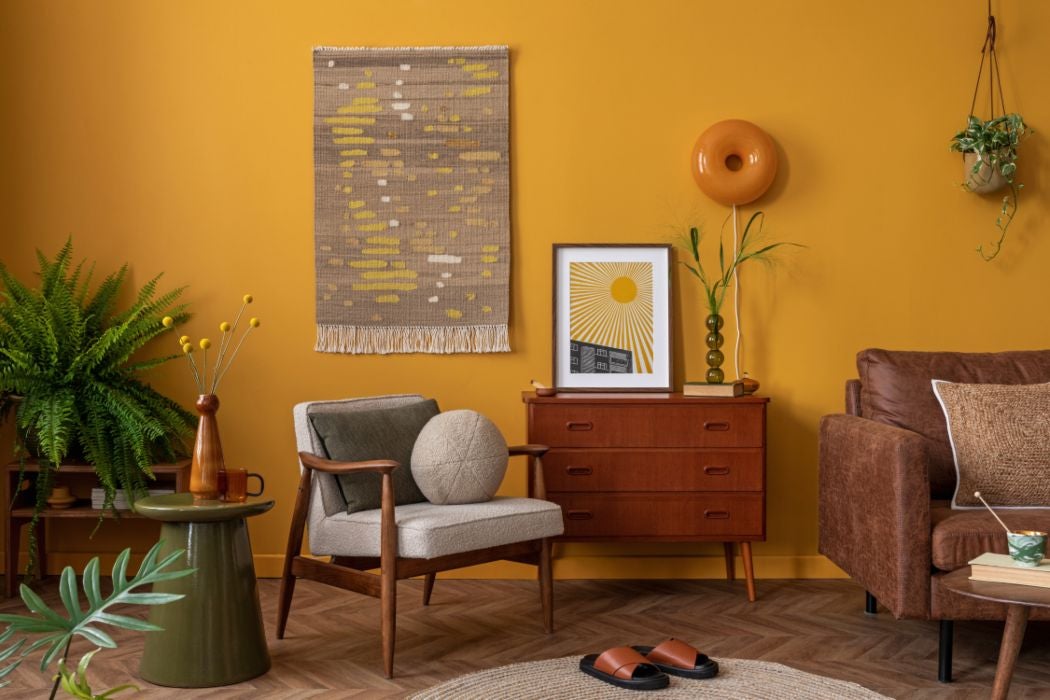
Tips for Minimalist Interior Design for Your Home
Minimalist interior design is a key trend in modern home decor, known for its focus on simplicity and functionality through the idea of “less is more.” This style isn’t about minimalism for its own sake but about creating spaces where each element serves a clear purpose, contributing to an overall sense of peace and order. As people seek relief from daily chaos, minimalist design transforms homes into calm retreats. Whether you appreciate its clean look or eco-conscious nature, minimalist interior design helps you create a stylish, clutter-free home that improves your daily life.
What is Minimalist Interior Design?
Minimalist interior design embraces simplicity, functionality, and the concept of “less is more.” It emphasizes the use of clean lines, neutral colour palettes, and a clutter-free environment to create spaces that are both serene and aesthetically pleasing. This design philosophy is not just about stripping away excess, but about thoughtfully curating elements that add value to a space without overwhelming it.
Origin of Minimalist Style
The origins of minimalist interior design go all the way back to the post-World War II era, particularly in the 1960s and 1970s. It emerged as a response to the opulence and excess of previous design movements, influenced by the minimalist art movement, which focused on simplicity and the essence of objects. Minimalist interior design also draws inspiration from traditional Japanese design principles, particularly the concept of “Ma,” derived from Zen Buddhism, which emphasizes the importance of space and balance. Over time, this style evolved and became synonymous with modernism, particularly in the context of modern minimalist interior design.
Why is Minimalist Interior Design So Popular?
The popularity of minimalist interior design has surged in recent years, largely due to its ability to create spaces that are functional yet aesthetically pleasing. In an age where people are increasingly overwhelmed by information and material possessions, minimalism offers a way to declutter both physical spaces and mental states. This design style is especially appealing in urban settings where space is often at a premium, and there is a growing appreciation for sustainable living practices.
Advantages of Minimalist Interior Design
- Aesthetically Pleasing Design: A significant advantage of minimalist interior design is its timeless aesthetic appeal. The focus on neutral colours, clean lines, and open spaces creates an environment that is both elegant and calming. Luxury minimalist interior design, in particular, can elevate a space by incorporating high-quality materials and thoughtful details, proving that simplicity and sophistication can go hand in hand.
- Increased Peace of Mind: A clutter-free environment naturally leads to a calmer mind. Minimalist spaces are designed to reduce visual noise, which can help alleviate stress and anxiety. The lack of unnecessary items allows for a more peaceful atmosphere, making it easier to relax and unwind.
- Improved Concentration: Minimalist interior design focuses on functionality, which means that spaces are organized in a way that minimizes distractions. This is particularly beneficial for home offices or study areas, where a clear and uncluttered environment can significantly boost productivity and concentration.
- Effortless Cleaning: With fewer items and surfaces to clean, maintaining a minimalist home is much simpler and less time-consuming. This is particularly advantageous in modern minimalist house interior design, where open spaces and flat surfaces dominate. The absence of excess decor and furniture means that dusting, vacuuming, and other cleaning tasks are quick and easy.
- Enhanced Functionality: Every element in a minimalist interior serves a purpose. This focus on functionality means that spaces are designed to be practical and efficient. Furniture often doubles as storage, and multipurpose pieces are common, making it easier to keep your home organized and free from clutter.
- Higher Market Value: Homes designed with types of minimalist interior design styles are often more appealing to potential buyers. The clean, modern look is universally attractive, and the emphasis on space and functionality can increase the perceived value of a property. As a result, minimalist homes often have a higher market value.
- Eco-Friendliness: Minimalist interior design naturally aligns with sustainable living practices. By choosing to buy fewer, but higher-quality items, and focusing on durability rather than quantity, you reduce waste and promote eco-friendly living. Additionally, the use of natural materials and energy-efficient lighting further enhances the environmental benefits of this design style.
Tips for Minimalist Interior Design
- Simplify Your Colours: A fundamental aspect of minimalist interior design is the use of a simple, neutral colour palette. Whites, greys, and beiges are commonly used to create a calm and cohesive look. If you want to add a pop of colour, go for soft, muted tones that complement the overall aesthetic without overpowering it.
- Free Up Space: Decluttering is essential in minimalist interior design. Start by removing any unnecessary items and focus on keeping only what you truly need or love. Open spaces are a hallmark of this style, so be mindful of how you arrange your furniture and decor to allow for plenty of breathing room.
- Store Stuff in a Stylish Way: Even in a minimalist home, storage is necessary. The key is to incorporate storage solutions that are stylish as well as functional. Consider built-in cabinets, floating shelves, and hidden storage options that will blend in with the overall design while keeping clutter out of sight.
- Use Modern Furniture: Modern minimalist house interior design often features sleek, contemporary furniture with clean lines and few adornments. Choose pieces that are functional and durable, with a focus on quality over quantity. Avoid overly ornate designs and select furniture that serves a specific purpose in the room.
- Use Accent Decorations: While minimalist interior design emphasizes simplicity, it doesn’t mean that your home has to be devoid of personality. Use accent decorations sparingly, such as a single piece of artwork, a statement vase, or a distinctive light fixture, to add interesting focal points without overwhelming the space.
- Clean Lines and Flat Surfaces: Focus on maintaining clean lines and flat surfaces throughout your home. This applies to everything from furniture and fixtures to architectural elements like windows and doors. The goal is to create a cohesive look that is both streamlined and harmonious.
- Trying Different Textures: Including various textures is a great way to add depth and charm to a minimalist space. Consider mixing materials like wood, stone, and metal, or using textiles such as wool, linen, or leather. The contrast of textures can make a room feel more inviting and less sterile.
- Organise Your Lighting: Lighting plays a crucial role in minimalist interior design. Choose natural light wherever possible, and use artificial lighting to highlight key areas or features in your home. Simple, understated fixtures work best, and consider using dimmable lights to create a soft, warm atmosphere.
Enhance Your Minimalist Home with Seamless Additions from Modular Home Additions
Incorporating minimalist interior design into your home is a powerful way to create a space that is both serene and functional. By embracing simplicity and prioritizing essential elements, you can enhance your home’s aesthetic while reducing clutter and maintenance. If you’re considering a home addition to complement your minimalist design in Toronto, Ontario, Modular Home Additions offers a “no mess, no stress” solution to seamlessly expand your space. Our expert team works with you to bring your unique vision to life, ensuring a beautiful, functional home that aligns with your minimalist lifestyle. Schedule a consultation today to explore how we can help you achieve the home of your dreams.
-
Biggest Mistakes
EXPERTS WEIGH IN ON THE BIGGEST MISTAKES BUYERS MAKE WHEN CONSIDERING A HOME PURCHASE.
FAILING TO CONSIDER ALL OF THEIR OPTIONS!
Homeowners will sacrifice their dream location because they can’t find a house that suits their needs or leave a neighborhood they love because they have outgrown their home. There is no need to compromise! In both situations, an addition provides the perfect solution. For homeowners who love their neighborhood, an addition can drastically increase available living space and may also be more cost efficient that moving would be!
When looking to buy, if there are no available properties in your desired neighborhood that offer the space you need, an addition can turn a smaller home into your dream home! While we all love the idea of a “move in ready” home, a little extra effort and the help of an expert team can result in the perfect home in the perfect neighborhood with no regrets! – Bole Cirovic, www.Modular.ca
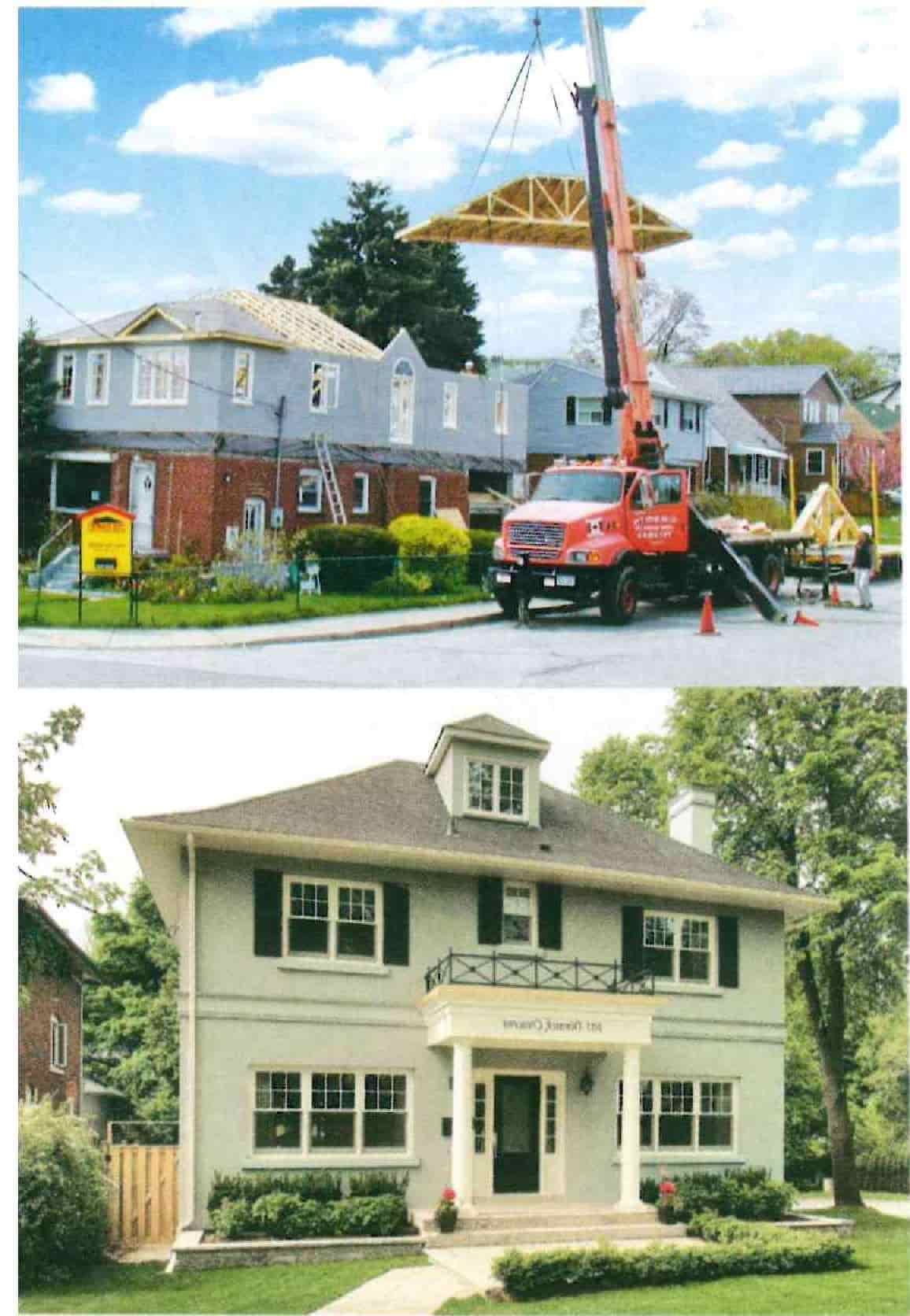
CONDO BUYERS FAILING TO EDUCATE THEMSELVES BEFORE PURCHASING!
Condominiums are non-profit corporations which are governed by legislation that can vary from province to province. When you purchase a condo unit, you become a shareholder and are responsible (through condo fees) for the financial obligations associated with maintaining the building and retaining peak market value.
The seller is required to provide you with current documents such as financials, Reserve Fund Studies, meeting minutes, management agreements, bylaws, insurance certificates and registered documents. It is important to engage a professional document review company to assist in putting that information into an easily understood picture of the corporation’s health and welfare. This review helps you to understand the corporation’s current condition and any foreseeable future issues such as major renovations or repairs that may affect your costs or the value of your unit. An experienced document reviewer will also be able to answer all of your questions and give you more information on bylaws and legislation.
Being aware of the corporation’s current and future condition is in your best interest as a future condo owner. Details matter. – Sharon Blondin, www.CondoQuest.net
FAILING TO OBTAIN A HOME PERFORMANCE DIAGNOSTICS REPORT!
This report provides valuable information about the current condition of a home and possible future issues. Essentially, it provides a detailed checkup of the home.
Unlike a typical home inspection, the home is tested under dynamic conditions in order to show how it breathes (are there leaks) and the condition of it’s heart (furnace/AC systems), arteries (ducts), and coat (insulation). The tests also show how effective and efficient air filtration is in the home, ensure all gas and combustion appliances are leak-free, checks quality of building materials and the effectiveness of the exhaust ventilation.
In case of any indoor air quality concerns, a separate assessment is performed. Samples for mold, bacteria or any other contaminant are processed by a registered lab. The report also includes a list of improvements recommended to rectify deficiencies found and a post-renovation/ improvements test can be performed to verify the results. -Andrej Bagar, www.FluxAir.ca

-
The Best in Home Additions
The Best in Home AdditionsHome Additions the Modular Way!Modular Home Additions showcased on the Marc and Mandy show.Watch Marc’s interview with Dule as he talks about adding value to your home through the use of home additions.Interested in learning more about the best in the home additions business?Visit our website for more information or contact our team directly. -
Building for Multi-Generational Households
As housing prices continue to skyrocket and the inventory of Canadian homes becomes increasingly smaller, multi-generational homes have begun to experience a renaissance. Parents and adult children as well as grandchildren are coming together to live under one roof.
To learn more about the impact this lifestyle trend is having on the home renovation industry, eieihome.com went to Vadja Jericevic, President and CEO of Modular Home Additions LTD.
Previously, the Canadian version of multigenerational living typically meant that a grown child had taken up residence in the basement of his or her parents’ home; however now, that is not always the case.
“In-law basements suites are not that common anymore,” Jericevic tell us. “Most often side, back or 2nd floor additions are discussed in cases where two families will be living together”.
In many households, the home’s living room, dining room and kitchen are shared, with the addition providing a separation of the sleeping and bathing quarters.
“[Older] parents usually get [a bedroom and separate bath] on the main floor in order to avoid the stairs, and the younger part of the family gets to climb to their bedrooms,” Jericevic says.
-
Eieihome.com: Are you ready to renovate?
 Have you been thinking about renovating your home for some time now but you don’t quite know who to call or where to begin?
Have you been thinking about renovating your home for some time now but you don’t quite know who to call or where to begin?In order to help you with the process, eieihome.com reached out to Bole Cirovic of Modular Home Additions, one of the GTA’s leaders in home renovation services.
It’s never too early to get the process started. “One of the most common misconceptions about the renovation process is that contractors can get started within 4-6 weeks of making contact.” Cirovic says.
The reality is that timeframe actually looks more like 4-6 months, so if you were hoping to get in touch with a contractor today to start your renovation this summer, you are out of luck.
The city permit process is time consuming, but the good news is that Modular Home Additions goes through the hassle for you.
Renovations 365 days a year. Although it may take longer then you hoped to get your renovation started, the good news is that Modular’s unique installation process allows them to work year-round. “ Believe it or not, renovations are actually easier in the winter because it is a drier season with less rain and wetness” Cirovic says. Read more .
-
The Canadian Home Trends Winter 2016 Edition Is Here!
The Canadian Home Trends Winter 2016 Magazine is here!
Click here for your free online copy and discover everything trending this winter for your home.
-
Modular Home Additions will be at The National Home Show!

Modular Home Additions Ltd will be exhibiting at the Home Show in March.
Make sure to stop by our booth and see how we can help grow your home in 3 days!
Details Below:
The Home Show will begin Friday March 11-20, 2016. Our Booth will be #2807.
Show Location: Enercare Centre, Exhibition Place
100 Princes’ Boulevard
Toronto, ON M6K 3C3 -
Feb/Mar Digital Edition of RENO&DECOR is now online!
The Feb/Mar Digital Edition of RENO&DECOR is now online for your reading enjoyment!
Click here or image below to start reading now!
Get Inspired with our ideas, tips & trends for small spaces, decluttering cures and so much more!

